The British ocean liner SS ARCADIAN, which was torpedoed by a German submarine and sunk in the First World War taking 279 men with it, was located by researcher Kostas Thoktaridis and his team southeast of Sifnos, at a depth of 163 meters.
“The quality of the primary metals used in the construction of the Arcadian has certainly played an important role in the preservation of the wreck to this day. From the underwater research, it appears that the bow of the Arcadian initially landed on the bottom of the Aegean, with the result that the deformations of the plates are visible. Due to the length of the ship (152.4 m) and in relation to the depth of the sea area, which is only 163 meters, the bow thrust helped to align the hull on the bottom, with the result that it remains isotropic on the bottom even today” he tells APE – Costas Thoktaridis, MP.
ADVERTISING SPACE
Torpedoing and sinking
The ARCADIAN had set sail from Thessaloniki with a final destination of Alexandria, Egypt carrying 1,155 military personnel.
During the voyage, the presence of an enemy submarine in Ikaria was noticed and thus he found himself sailing through the Cyclades in order to avoid the submarine.
ADVERTISING SPACE
ARCADIAN was sailing at 13.5 knots and the escort vessel HMS SENTINEL ahead. On 15 April 1917 at 17:40 the convoy was between Sifnos, Antiparos, Sikinos and Folegandros, the sea state was good and nothing foretold what was about to happen. At 17:44, an explosion rocked the ARCADIAN. The German submarine UC-74 had spotted the ocean liner and launched an attack on it. A torpedo struck the ship on her starboard side, between bridge and fore mast.
ARCADIAN’s master Charles L. Willats ordered “engines hold” and sounded the alarm siren to proceed to the assembly stations. The ship’s crew did an exemplary job. After all, just ten minutes before the torpedoing they had completed an abandon ship training course and most of them were still on deck. The master ordered the crew to proceed with the immediate removal of the lifeboats and to abandon the ARCADIAN. The ship began to sink with the bow and developing an inclination to the left.
The master remained on the bridge monitoring the abandonment process and the evolution of the ship’s condition. The military personnel proceeded to evacuate the ship with discipline and composure. Just five minutes after the explosion as the bow of the ARCADIAN was lost in the Aegean waters there was a loud noise, the vessel took a sudden heel and her stern was thrown. Meanwhile, HMS SENTINEL which was about 900 meters ahead of the gunboat, dropped six rafts and picked up 123 castaways. At 20:30 French warships from Milos arrived at the site of the wreck and continued the work of rescuing the castaways who were clinging to the surface from pieces of the wreck, while others were in rafts and boats.
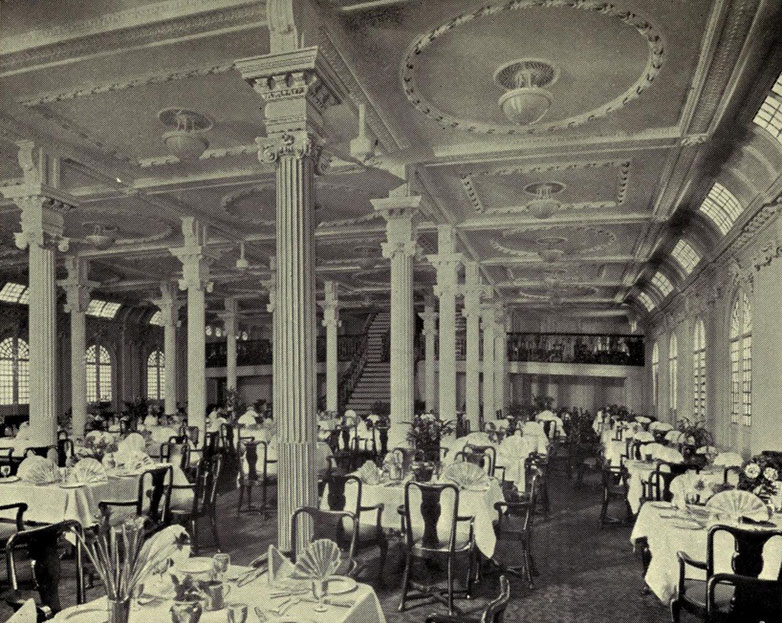
Of those on board, 1,058 people were rescued, while the remaining 279 were lost in the waters of the Aegean. Of these, 34 were crew members, two were civilians, ten were in the Navy and the rest were in the Army.
The survivor of the Titanic who was rescued from the wreck of the Arcadian
For the heater Thomas Threlfall the experience of the shipwreck was already familiar. She had been wrecked again, on April 14-15, 1912, exactly five years before as a crew member of the Titanic. Threlfall would later declare: “It was the same day and the same month that the Titanic sank, but in both cases I came out alive”!
The imposing ocean liner 107 years at the bottom
The investigation into the SS ARCADIAN began with the search for primary sources in the British and German Archives and the gathering of important information that led to the location of the ocean liner at the bottom of the Aegean. The wreck is located at a depth of 163 meters southeast of Sifnos and is kept in excellent condition, being one of the most impressive wrecks in Greece as it is intact. Time seems to stand still at his 1917 sinking.
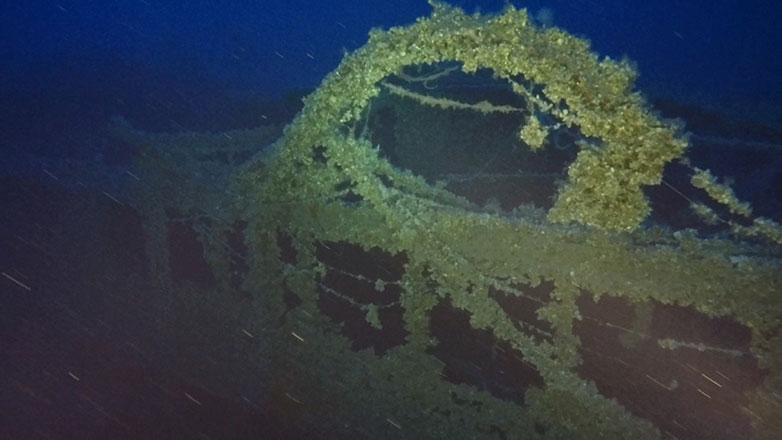
“The masts have fallen to the treble and to the left. The lookout post can be seen on the bow mast. On the right side there is a crack from the torpedo attack of the German submarine. An unusually large concentration of fishing gear was observed on the wreck, fishing lines, nets, lines, etc. The underwater visibility in the area is excellent, as it is in most areas of the Aegean. The underwater currents help the clarity of the waters while on the wreck the marine life is relatively reduced. The caps that once held the lifeboats stand out, from which fishing lines and fishing gear now hang. During the sinking of the ship the chimneys were detached. The wreck was located and identified using an underwater Remote Operated Vehicle,” notes K. Thoktaridis.
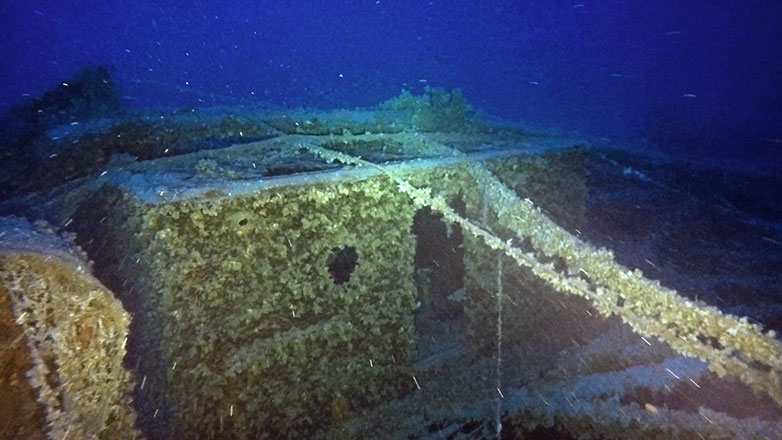
The Arcadian identity
From an ocean liner it was converted into a warship for the needs of the war. The ship was built in 1899 at Vickers, Sons & Maxim shipyards in Barrow-in-Furness, England for the Pacific Steam Navigation Co.
It had a total capacity of 7,945 tons, and dimensions of 152.4 meters long and 16.9 meters wide. She had two propellers and a triple expansion steam engine and could travel at a service speed of 14 knots. It was originally called ORTONA and traveled from Britain to Australia as part of his company’s partnership with Orient Line. With the declaration of the First World War the ARCADIAN was requisitioned in February 1915 by the British Admiralty in order to be converted into a gunboat.
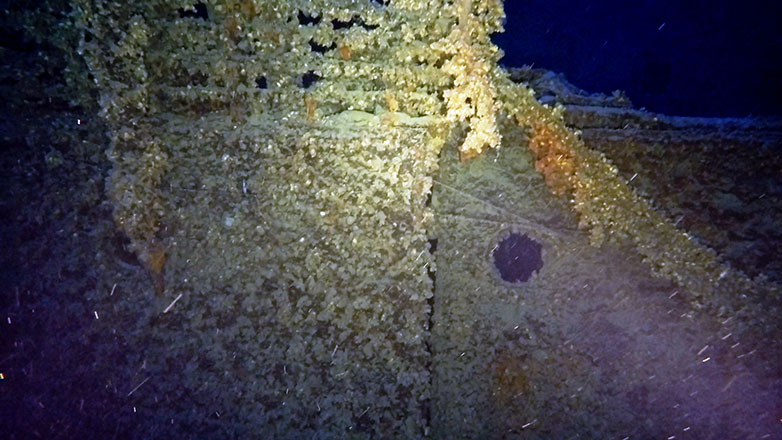
The perpetrator: The German submarine UC-74
UC-74 was a UC II class submarine built in 1916 at the Vulcan shipyards in Hamburg. During the search of the German archives, the logbook of the submarine UC74 was found. A submarine that had a very important action during the first world war since it sank a total of 37 ships, 10 of which were Greek. Admiral Wilhelm Marschall was the first commander of the submarine. In his one year stay on UC-74, Commodore Marschall proved to be highly effective as he sank 27 vessels of various types.
The sinking of the ARCADIAN is described in detail in the submarine’s war log.
“We have identified a great target. To the right of the submarine was approaching a passenger ship accompanied by a warship. We noticed the passenger car turning right towards us with the warship in front making constant maneuvers. Then the passenger ship that had now come to the left of the submarine was identified as a large gunboat. A battle stand was ordered and the crew took up battle positions. The submarine came in periscope depth approaching the target to within 500 meters and we attacked with a single torpedo. In no time we heard the sound of a loud explosion. Immediately after that we dived to a depth of 40 meters.” When the UC-74 resurfaced, it was nightfall and in the darkness the lights from searchlights in the sinking area and green flares could be seen, a sign that the search for wreckage was continuing.
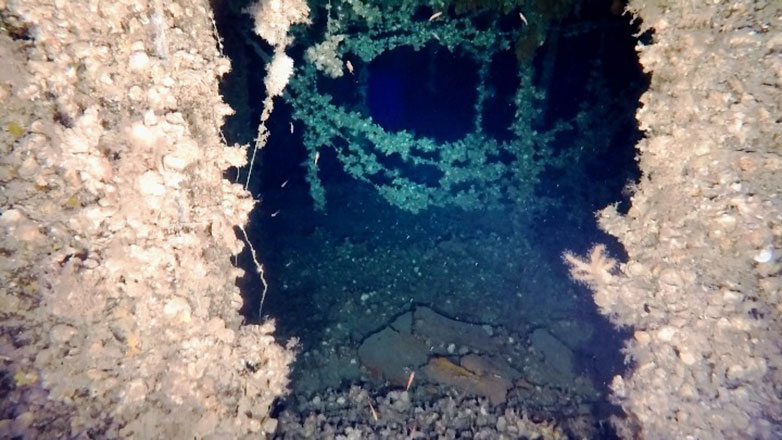
Captain Charles L. Willats – Shipwrecked three times
Captain Charles L. Willats in the 23 years he served on ships of the Royal Mail Line had been wrecked twice more. On 5 November 1915 as master of the ocean liner PEMBROKESHIRE he ran aground on a reef in the Canary Islands. Then on 7 January 1917, he was in command of the freighter RADNORSHIRE in the South Atlantic when it was sunk by the German auxiliary cruiser MOEWE. The master and crew were held captive until they were landed in Brazil. There they boarded the gunboat DRINA to return to England, but on 1 March off the British coast, the German submarine UC-65 sank the DRINA. Despite the fact that he was shipwrecked three times, he managed to survive all three times.
Source: www.zougla.gr


